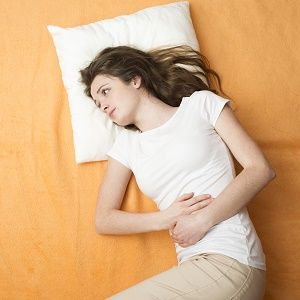Etiology of Bladder Pain Syndrome Still Unknown, but Some Treatments Show Promise
Researchers are still trying to establish a sound definition of bladder pain syndrome, identify its pathophysiology, and suggest a treatment approach that moves beyond specialist care to more individualized treatment.

Bladder pain syndrome (BPS), also known as interstitial cystitis, is recognized but poorly defined and poorly understood. Most clinicians believe it is a combination of several different conditions, including autoimmune dysfunction, urothelial leakage, infection, central and peripheral nervous system dysfunction, genetic disease, and childhood trauma/abuse, among others. Thus, a specialist simply treating the bladder is typically not enough for successful treatment.
A recent study in the International Journal of Women’s Health took a closer look BPS in an attempt to both further establish a sound definition of the condition, identify its pathophysiology, and suggest a treatment approach that moves beyond specialist care to more individualized treatment.
The European Society for the Study of Interstitial Cystitis (ESSIC) defines bladder pain syndrome (BPS) as chronic (over 6 months) pelvic pain, pressure, or discomfort perceived to be related to the urinary bladder, accompanied by at least one other urinary symptom such as persistent urge to void or frequency in the absence of an identifiable cause. The condition can be incredibly painful for patients and immensely deleterious on quality of life.
Among the interesting notes illustrated by the study authors:
- Earlier studies have shown a potential genetic predisposition to BPS, similar to that found in fibromyalgia, suggesting that the conditions may have similar underlying genetic factors.
- Diseases known to be caused by autoimmune mechanisms, such as allergies, rheumatoid arthritis, and inflammatory bowel disease, were significantly more frequent among BPS patients, yet a link underlying those conditions hasn’t yet been found.
- Although some patients with BPS don’t show evidence of a current infection should not lead one to assume that an infectious agent does not play a role in the pathogenesis of BPS. According to the study authors, “Both infectious agents not identified by routine workup, such as nanobacteria, and those that are responsible for a painful response that remains long after the infection has been eradicated, such as an uropathogenicEscherichia coli, are plausible candidates in the disease etiopathogenesis.”
- Helicobacter pylori-induced endoluminal damage may play a causal role in BPS, as well as atherosclerosis. BPS has been reported to increase the risk of coronary heart disease.
- Adverse early life events commonly linked to chronic pain disorders, such as child abuse and other adverse childhood experiences, are highly frequent in BPS patients, but this link requires further study.
- “The association of BPS/IC with other pain syndromes in patients leads to the realization that it might not be an isolated condition but rather part of a disease with systemic, regional, or organ manifestations varying with each patient,” the study authors note.
The study also suggests a diagnostic approach that rules out other “confusable” conditions such as malignancies, infections, neurologic disease, bladder outlet obstruction, and others. After this, assessment should include urine analysis, uroflowmetry, cystoscopy with hydrodistension, and bladder biopsy as necessary. The primary goal of management, given that there is no curative treatment, is to improve the patient’s quality of life.
First-line treatments should include amitriptyline, pentosanpolysulfate, and hydroxyzine.Hydroxyzine, a histamine type 1 (H1)-receptor antagonist, blocks histamine release in the bladder by inhibiting mast cell degranulation, but there are as yet no randomized, controlled trials supporting its use. Cyclosporine A was also shown to be effective at treating BPS, but with serious adverse events. The study also looks at immunosuppressant drugs, injections, and intravesical treatments, physical therapy, and surgical treatments—all of which show promise, but none of which are a panacea for treatment.
“Further research on the etiology of the disease is paramount to curative treatment(s),” the study authors conclude.